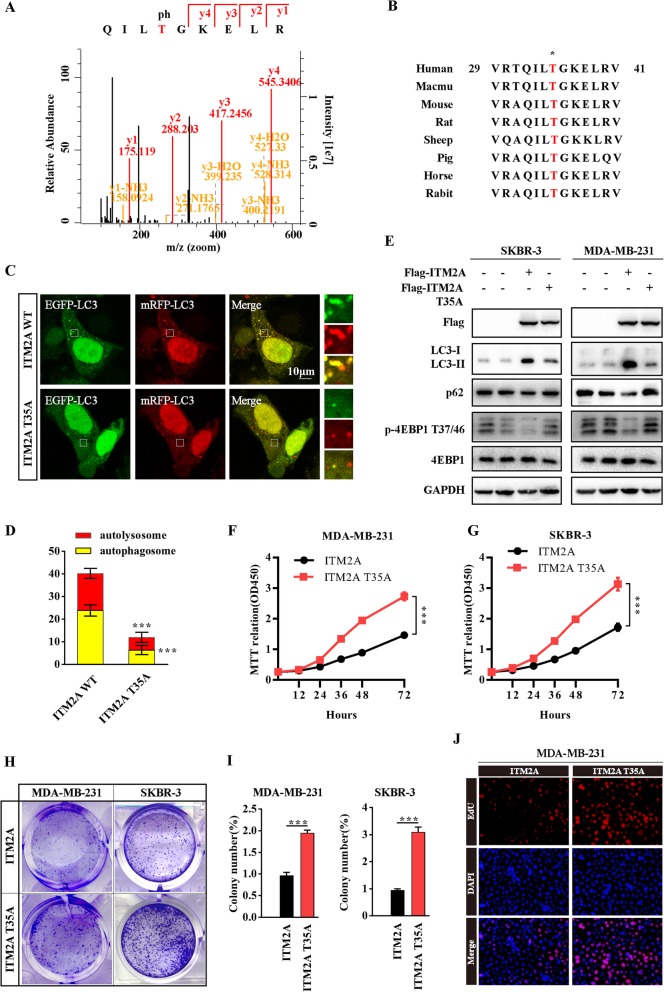Fig. 3.
ITM2A is phosphorylated at T35 and the phosphorylation status of ITM2A contributes to breast cancer proliferation.(a) The mass spectrum showed that ITM2A was phosphorylated at T35. (b) Amino acid sequences around the threonine 35 residue in ITM2A across different species. The asterisk at the top, represents the threonine residue that is conserved across species. (c and d) Representative confocal images of mRFP-GFP-LC3 puncta in SKBR-3 cells transfected with ITM2A wild-type and T35A mutant vector. The numbers of cells showing accumulation of yellow or red puncta were quantified (n = 10). (e) Western blotting analysis of SKBR-3 and MDA-MB-231 cells transfected with empty vector, ITM2A expression vector and ITM2A T35A mutant vector using the indicated antibodies. (f and g) The growth curve of MDA-MB-231 and SKBR-3 cells transfected with wild-type ITM2A and T35A mutant plasmids. (h and i) Colony formation assays were performed for MDA-MB-231 and SKBR-3 cells transfected with wild-type ITM2A and T35A mutant plasmids. (j) DNA synthesis of MDA-MB-231 cells transfected with wild-type ITM2A and T35A mutant plasmids was assessed by EdU assays. Data are presented as the mean ± SD. Two-tailed Student’s t-test was used. *P < 0.05; **P < 0.01; ***P < 0.001

